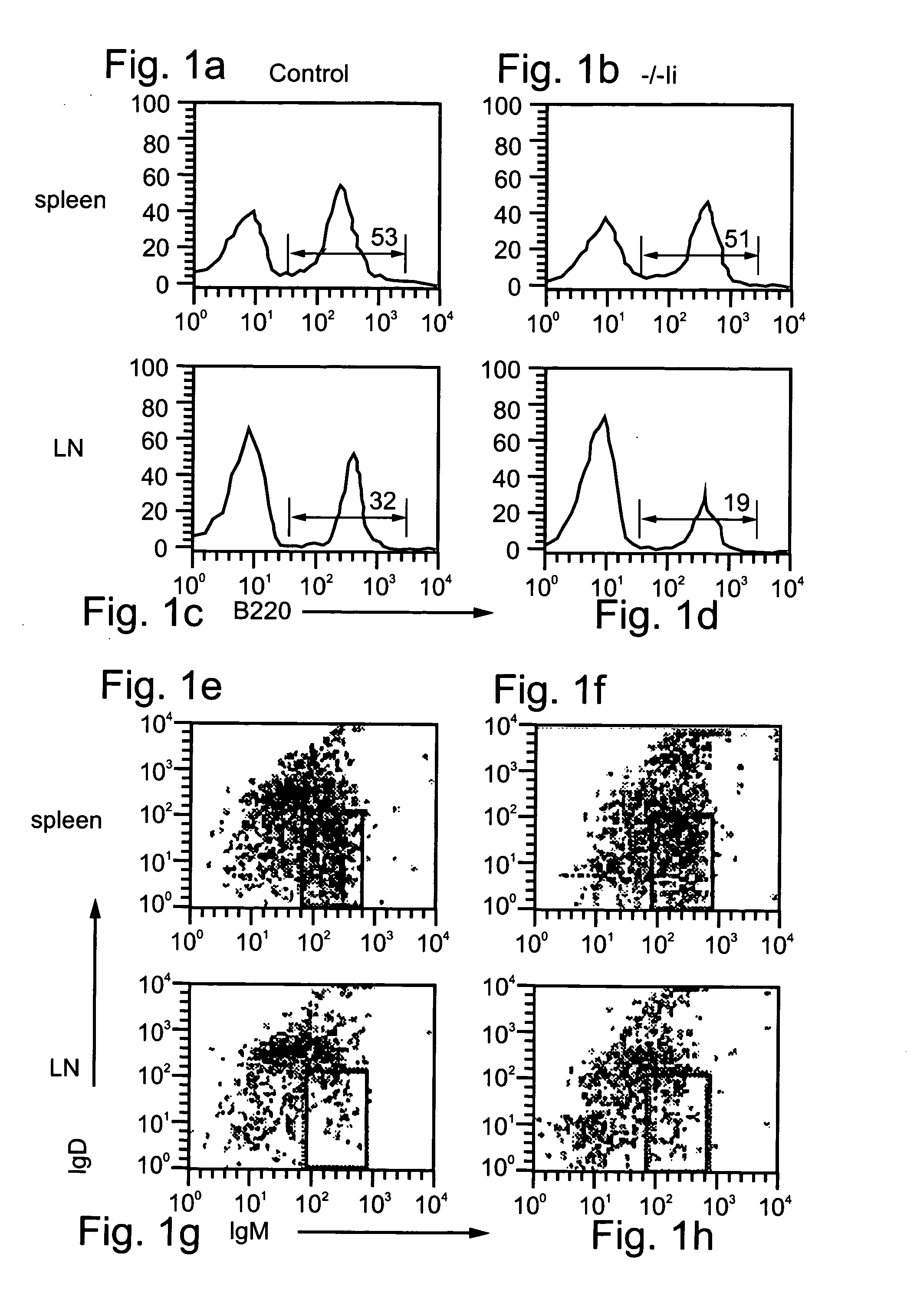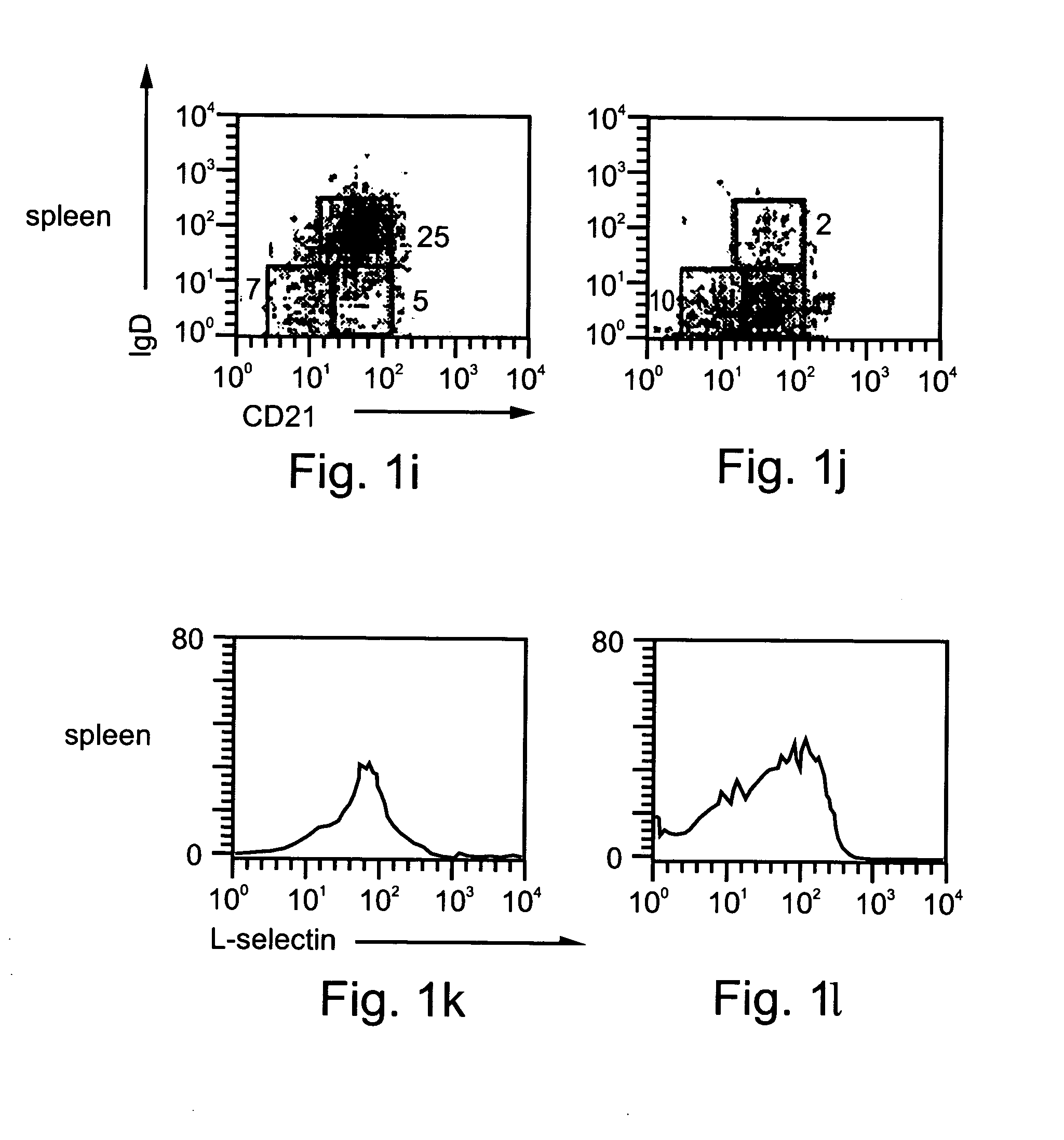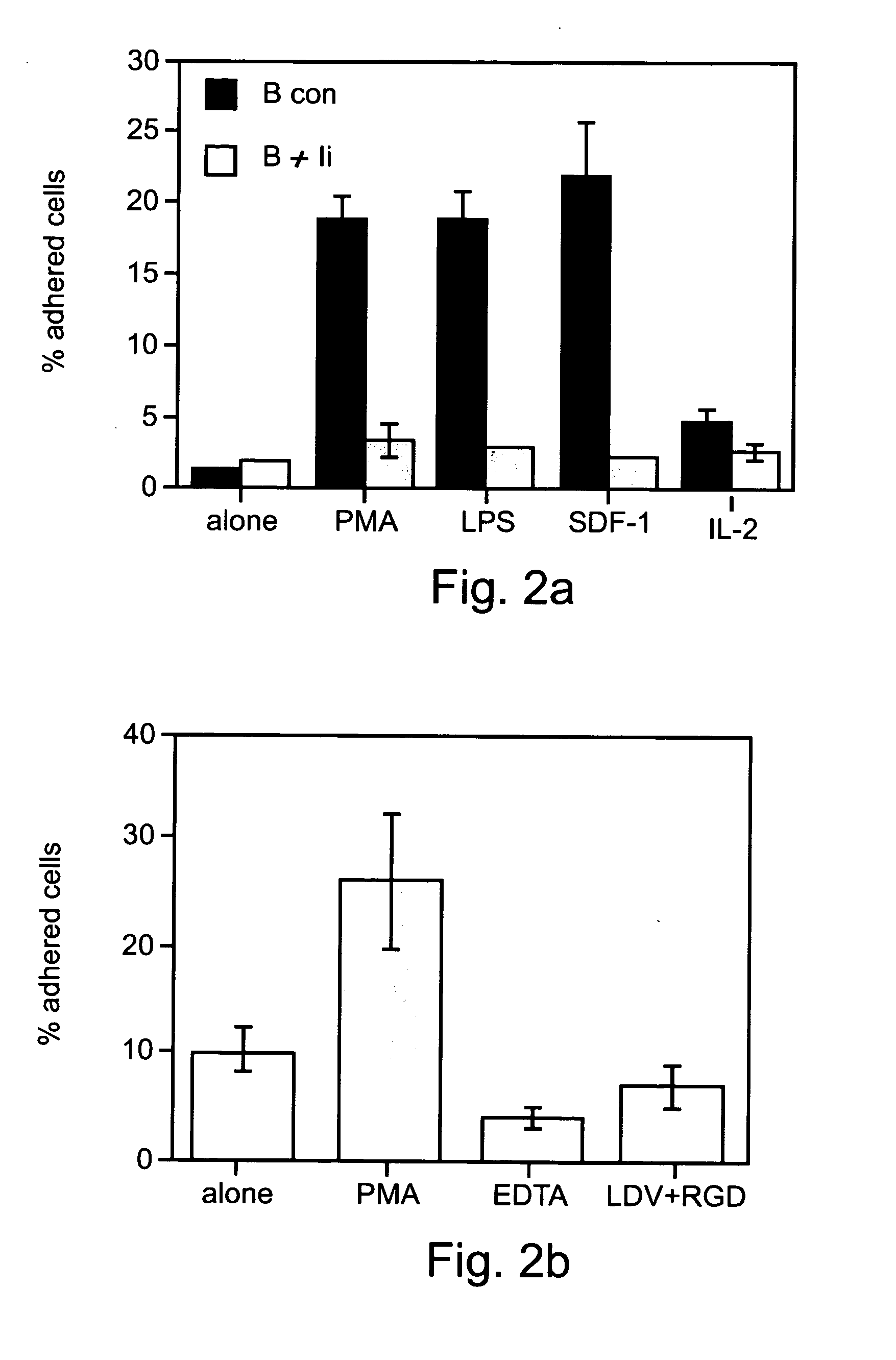Method and pharmaceutical composition for treating inflammation
a technology of pharmaceutical compositions and compositions, applied in the field of methods and pharmaceutical compositions for treating inflammation, can solve the problems of unacceptably severe side effects of treatment, unfavorable patient safety, and third-party bone and muscle pain, and achieve the effect of not causing severe side effects and risk
- Summary
- Abstract
- Description
- Claims
- Application Information
AI Technical Summary
Benefits of technology
Problems solved by technology
Method used
Image
Examples
example 1
Ultra-Low Levels of IFN-γ Inhibit B Cell Adhesion to Extracellular Matrix and Homing to Lymph Nodes
[0293] Inflammation mediated by lymphocytes, such as B lymphocytes, as described above, plays a major role in the pathogenesis of many diseases, such as, but not limited to, autoimmune diseases, allergy, graft rejection, bacterial and viral infections and cancer. Since B lymphocytes play a central role in humoral and cellular immunity via antibody production and antigen presentation, respectively, the ability to downregulate B cell function is a highly desired therapeutic goal. Such downregulation may be effected, for example, by downregulation of B cell adhesion to ECM and homing to LNs, so as to interfere with extravasation and hence activation of B cells and their migration to sites of pathogenesis. Since immature B cells are negatively selected in the bone marrow and in the periphery before their maturation in the spleen via apoptotic elimination in response to self-antigen, natur...
example 2
Ultra-Low Levels of IFN-γ Inhibit ECM Adhesion and Migration of T Lymphocytes and Constitute an Effective Treatment for T Cell-Mediated Diseases
[0329] Immunoreactivity mediated by T lymphocytes, as described above, plays a major role in the pathogenesis of many diseases, such as autoimmune diseases, allergy, graft rejection, infection and cancer. This is a consequence of the fact that T lymphocytes are the major effectors of specific cellular immunity, both in their ability to respond to target cells expressing MHC-peptide complexes and in their ability to provide helper cytokines promoting B and T lymphocyte function. Thus, the ability to inhibit T lymphocyte function is a highly desired therapeutic goal.
[0330] As demonstrated in Example 1 with respect to B lymphocytes, inhibition of T lymphocyte effector functions can also be efficiently achieved by down-regulating their capacity to adhere to ECM and to migrate. Such inhibition represents an effective means of preventing T lymph...
example 3
Ultra-Low Levels of IFN-γ Downregulate Integrin-Dependent Adhesion of B Cells by Activating a Pathway that Interferes with Cytoskeleton Rearrangement
[0366] In the above Examples it was shown that immature B cells can actively exclude themselves from antigen-enriched sites by downregulating their integrin-mediated adhesion by autocrine production of IFN-γ. Treatment with immature B cell-conditioned medium or ultra-low levels of IFN-γ, according to the method of the present invention, was shown to be capable of inhibiting ECM adhesion and tissue migration of both B and T lymphocytes and thereby to effectively treat a broad range of major classes of inflammatory diseases, as described in Example 2.
[0367] Thus, experiments were performed in order to clearly demonstrate the biochemical and physiological mechanisms by which ultra-low levels of IFN-γ, employed according to the method of the present invention, inhibit the adhesion and migration of lymphocytes and thereby can be effectivel...
PUM
 Login to View More
Login to View More Abstract
Description
Claims
Application Information
 Login to View More
Login to View More - R&D
- Intellectual Property
- Life Sciences
- Materials
- Tech Scout
- Unparalleled Data Quality
- Higher Quality Content
- 60% Fewer Hallucinations
Browse by: Latest US Patents, China's latest patents, Technical Efficacy Thesaurus, Application Domain, Technology Topic, Popular Technical Reports.
© 2025 PatSnap. All rights reserved.Legal|Privacy policy|Modern Slavery Act Transparency Statement|Sitemap|About US| Contact US: help@patsnap.com



